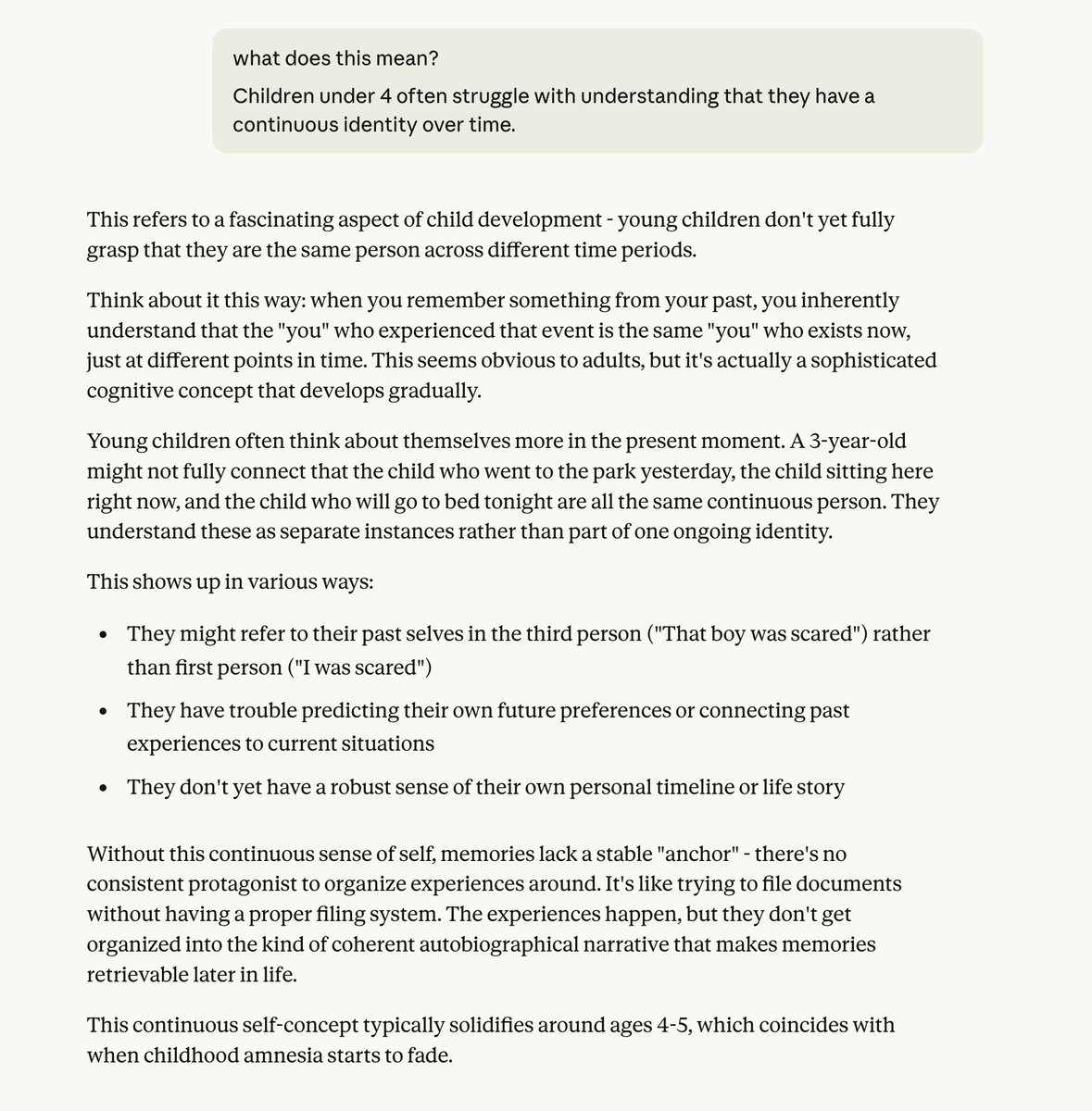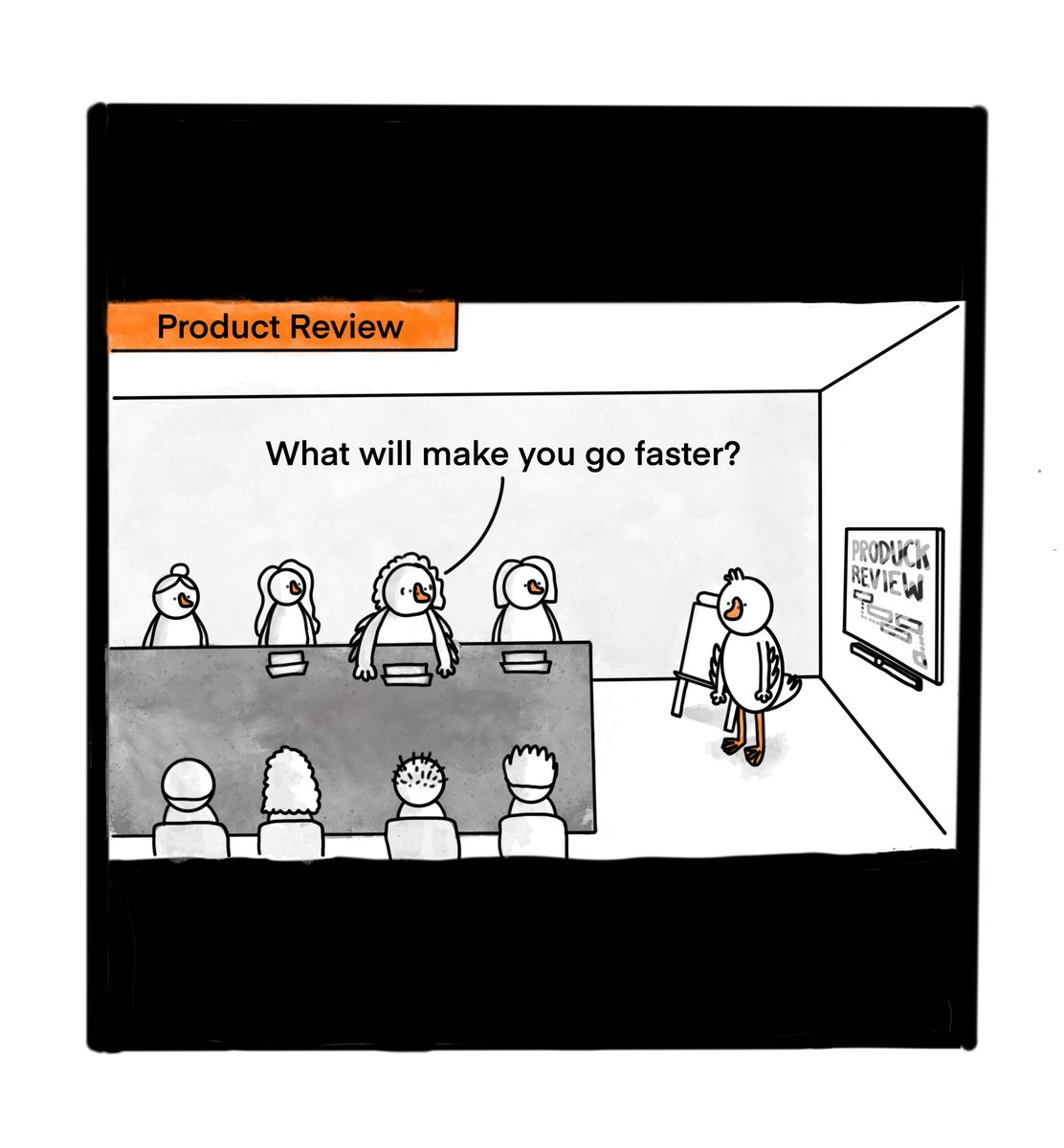“My team has a prioritization problem. Help!“
Product prioritization, a thread:
(1/30)
Product prioritization, a thread:
(1/30)
Most product prioritization problems are really strategy problems.
So you need to start with strategy.
There are 4 types of strategy problems.
So you need to start with strategy.
There are 4 types of strategy problems.
4 strategy problems
-Acceptance: “we dont think strategy is important”
-Creation: “we know it’s important but we dont have one”
-Substance: “we have one, but it’s flawed”
-Communication: “we have a good strategy, but the team doesnt grok it/can’t recall it/can’t describe it”
-Acceptance: “we dont think strategy is important”
-Creation: “we know it’s important but we dont have one”
-Substance: “we have one, but it’s flawed”
-Communication: “we have a good strategy, but the team doesnt grok it/can’t recall it/can’t describe it”
So if, as a product leader/CEO, you think your team isn’t
- working on things that truly matter, or
- achieving results that justify the investment
it is first ON YOU to figure out which of the 4 strategy problems you have, and fix them.
- working on things that truly matter, or
- achieving results that justify the investment
it is first ON YOU to figure out which of the 4 strategy problems you have, and fix them.
Now, let’s say you have a sound strategy that is very well-communicated i.e. everyone on the team can describe the main pillars of your strategy clearly & succinctly, along with the rationale for said strategy.
Wonderful. You’re now in the upper 10% tier of product teams.
Wonderful. You’re now in the upper 10% tier of product teams.
Most of the prioritization problems that really matter in the long game should now be history.
But I'm sure you want more.
So what can you do next to make product prioritization work even better?
It’s Systematic Planning.
But I'm sure you want more.
So what can you do next to make product prioritization work even better?
It’s Systematic Planning.
For Systematic Planning, the highest leverage technique is to clarify the key themes and investment allocation for the next 12 months / 6 months / 3 months (whatever is the right time granularity for you to be doing planning for your industry / product category).
Make sure that everyone is clear on this allocation.
For instance, way back in the day, Google invested 70 / 20 / 10 % of its time across search+ads / apps / other bets.
This sort of X/Y/Z % framework can be quite clarifying when you’re leading a portfolio of distinct products.
For instance, way back in the day, Google invested 70 / 20 / 10 % of its time across search+ads / apps / other bets.
This sort of X/Y/Z % framework can be quite clarifying when you’re leading a portfolio of distinct products.
Now, what if you aren’t leading a product portfolio? Let’s say you’re leading a single product. How should you think about themes & allocation then?
At the level of a single product, you can think of allocation across these themes:
1) Differentiators
2) Tablestakes
3) Incrementals
4) Embarrassments (or “Broken Windows”)
5) Customer Specials (or “Large Customer Requests”)
6) Speculative Bets
7) Tech Foundation
1) Differentiators
2) Tablestakes
3) Incrementals
4) Embarrassments (or “Broken Windows”)
5) Customer Specials (or “Large Customer Requests”)
6) Speculative Bets
7) Tech Foundation
(of course, as you think through these themes and their relative importance for your product right now, make sure to keep the user/customer at the core of your thinking)
Note that “Tech Foundation” is a catch-all to include Reliability, Security, Eng Productivity, Infra, etc. You can (and often should) extract one or more of these into a top-level theme.
You can also treat certain themes as one unit (e.g. “Tablestakes + Incrementals”).
You can also treat certain themes as one unit (e.g. “Tablestakes + Incrementals”).
Now, before moving on, I’d suggest reading the previous 3 tweets again, internalizing them & considering what themes make most sense to prioritize for your product for the next 12/6/3 months.
If you do that, you'll be in the top 25% within the top 10% tier of product teams.
If you do that, you'll be in the top 25% within the top 10% tier of product teams.
For a given 3 month/6 month period, it’ll rarely be the case that you need to prioritize every single theme above.
For instance, for one of the products I led in recent years, here’s the allocation for a given quarter:
60% Differentiators
30% Tech Foundation
10% Speculative Bets
For instance, for one of the products I led in recent years, here’s the allocation for a given quarter:
60% Differentiators
30% Tech Foundation
10% Speculative Bets
Naturally, the next question will be: how do you decide on what themes matter most & what investment to allocate across those themes?
This is where your judgment as a product leader is vital. No spreadsheet, now matter how colorful, its fancy weighted formulas or pivot tables, its underlying research/analytics insights, is going to answer this for you. Use all these inputs, of course, but don’t forget judgment.
I tend to use the power of questions to exercise my judgment for the key themes. I'll list some of those questions in the next few tweets.
1) What do we need to do in the next N months to make the most meaningful progress towards our strategy?
👇🏾
1) What do we need to do in the next N months to make the most meaningful progress towards our strategy?
👇🏾
Questions (contd.)
2) What key risks do we need to mitigate or eliminate? (e.g. an important customer that might churn, a major systems liability, etc.)
3) To what degree do we need to play Offense in the next N months vs. play Defense?
👇🏾
2) What key risks do we need to mitigate or eliminate? (e.g. an important customer that might churn, a major systems liability, etc.)
3) To what degree do we need to play Offense in the next N months vs. play Defense?
👇🏾
Questions (contd.)
4) How important is growth right now vs. protecting what we have vs. laying the foundation for future growth?
5) Are we currently in Explore mode with this product or Exploit mode?
👇🏾
4) How important is growth right now vs. protecting what we have vs. laying the foundation for future growth?
5) Are we currently in Explore mode with this product or Exploit mode?
👇🏾
Questions (contd.)
6) What strategy-aligned efforts will help address the team problems I want to see solved/mitigated in the next N months? (e.g. morale boosting features, execution-enabling "incrementals", frustration-removing technical foundation work, etc.)
👇🏾
6) What strategy-aligned efforts will help address the team problems I want to see solved/mitigated in the next N months? (e.g. morale boosting features, execution-enabling "incrementals", frustration-removing technical foundation work, etc.)
👇🏾
Questions (contd.)
7) What key initiatives have the greatest Expected Value and what themes do they fall in? (quasi bottoms-up)
8) What is largely in my or my team’s control, on what do we rely on other teams, and what are the risks there?
7) What key initiatives have the greatest Expected Value and what themes do they fall in? (quasi bottoms-up)
8) What is largely in my or my team’s control, on what do we rely on other teams, and what are the risks there?
There are potentially other context-specific questions too, but hopefully this gives you the general picture.
After working through these questions, getting feedback from team members who have relevant/different context, making appropriate corrections, it’s now time to clarify how you’d like your team to allocate their efforts over a given quarter/half-year.
By now, you’ve shared the strategy with your org, the key themes for the quarter/half, the target allocation across these themes (at the level of the org, not individual teams)
Whats next?
If you have capable user-centric teams, it’s time to let bottoms up planning do its magic.
Whats next?
If you have capable user-centric teams, it’s time to let bottoms up planning do its magic.
Let the teams propose with the features/initiatives/etc. that they think will make the greatest impact. Your role from this point is to track how the planning process is progressing, share your take on team's questions & clarify things that you feel particularly strongly about.
It’s fine to use a prioritization framework (e.g. RICE) to come up with the list of things that are above/below the line for the given timeperiod. Make sure these “things” are concrete and have clear criteria for how they’ll be accomplished (a launch, an experiment, metrics, etc)
Also fine to use RICE or similar prioritization framework to evaluate new surprises/requests that come up after planning is done. Just make sure to use your strategy, key themes, and target allocation as a compass when you do so, and don’t *accidentally* veer away from them.
There’s a lot more to discuss here w.r.t. ongoing tracking of progress, escalations, dealing with new information, surprises (esp. unpleasant ones), etc. but hopefully this thread has been a helpful POV on how to view prioritization as a systematic process & your role in it.
Last but not least, there are a number of other valid ways to do prioritization and there are no “rules” here. So feel free to mix and match these and other ideas to create your own, context-appropriate approach to prioritization.
Best of luck!
Best of luck!
Back to the top of this thread:
https://twitter.com/shreyas/status/1320105221570228224
Some related threads👇🏾
How to maintain your sanity when doing annual planning
https://twitter.com/shreyas/status/1302423854095036421
How to do product strategy
https://twitter.com/shreyas/status/1262072050815954944
Is this *really* an Execution problem?
https://twitter.com/shreyas/status/1316573473934696449
A primer on product metrics
https://twitter.com/shreyas/status/1304628719374544896
Some principles for product work (includes several related to prioritization & strategy)
https://twitter.com/shreyas/status/1313539331563298817
• • •
Missing some Tweet in this thread? You can try to
force a refresh














